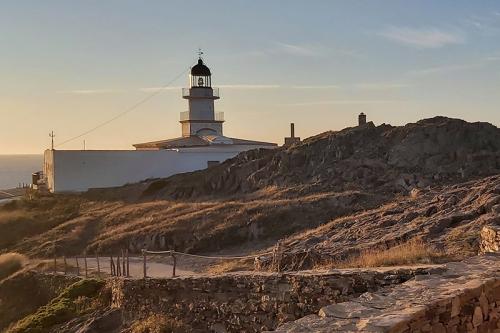This lighthouse is the most easterly lighthouse on the Iberian Peninsula. Located in a desolate and isolated spot of extraordinary beauty, nowadays, it is surrounded by the Cap de Creus Natural Park. It stands 500 metres from Punta del Cap on a black cliff with a complex and precipitous coastline known as Punta de la l’Esquena, which plunges into the sea, forming several rugged coves and an island called “l’Encalladora”, which is separated from the mainland by a narrow channel.
The lighthouse rises 87 meters high, enduring the strong Tramuntana(northerly) and Llevant (easterly) winds, and serves as both a navigational light and a coastal reference point in one of the most challenging areas of the Catalan coast. Surrounding the facility is a large building that has been converted into the information office for the Natural Park. At the core of the facility is an 11-meter-tall tower.
The light was officially put into service on the night of 29 July 1853, making it the second oldest lighthouse in Catalonia, inaugurated 19 months after the Llobregat lighthouse. Its construction was driven by the desire and need to build a lighthouse on this strategic geographical point of the peninsula's coast, which led to its inclusion in the first lighthouse system programme designed by the government of Isabel II.
In October 1937, during the Civil War, an attack rendered the lighthouse's lens useless, plunging it into darkness until the end of the conflict. The fact that it was targeted underscores its strategic importance.
In the 1960s, the lighthouse and its nearby small-scale model served as the backdrop for several adventure films, including "The Lighthouse at the End of the World", based on a novel by Jules Verne. The story revolves around pirates who use the lighthouse to disorient ships, luring them in to steal their treasure.
The area has also been a source of inspiration for many painters, poets, surrealists and avant-garde artists, both European and American.
Video


